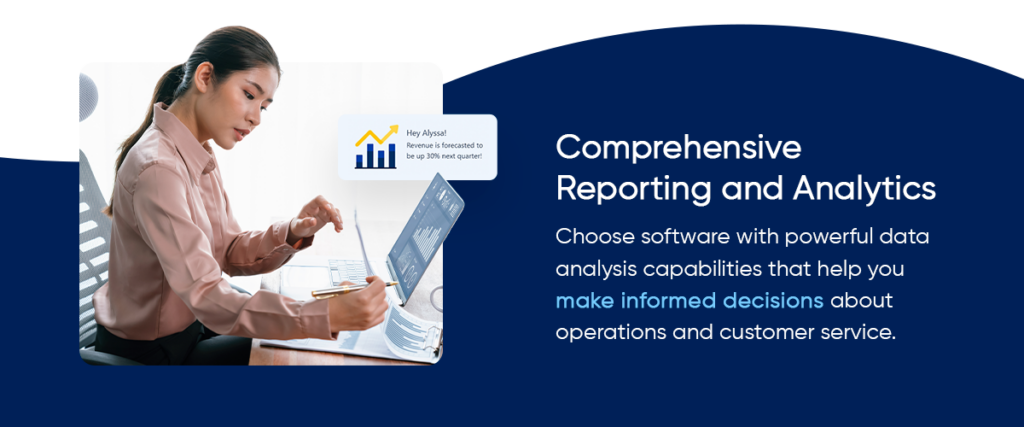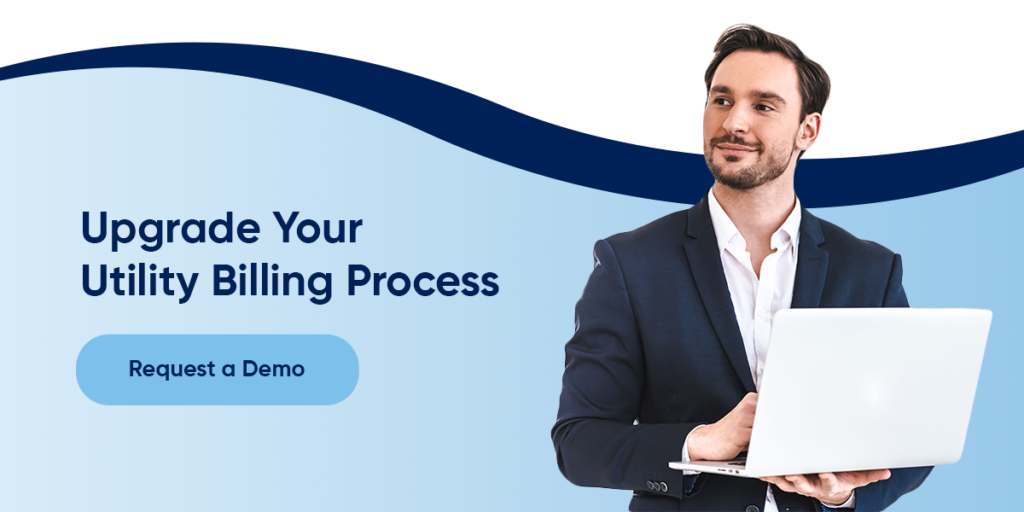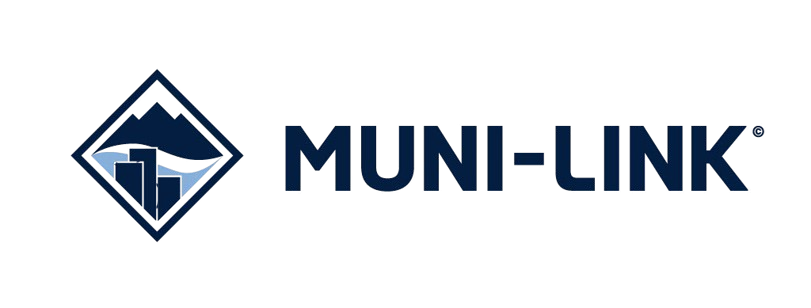
Top Features to Look for in Utility Billing Software
Are manual processes draining your municipality’s resources while your customers grow increasingly frustrated with outdated payment options? For water and sewer utility providers, choosing the right billing software is a technological upgrade that’s also a strategic investment that enhances operational efficiency, staff productivity and customer satisfaction. It’s common today for customers to prefer using digital payment solutions when making bill payments, but a lot of utilities still struggle with legacy systems that can’t meet modern expectations.
To help you make an informed decision that benefits both your organization and customers, let’s explore the essential features to consider when selecting software for a water and sewer billing management system.
What Type of Software Does Your Team Need?
Before diving into specific features, it’s important to understand your organization’s unique requirements. The right utility billing software should align with your operational goals and address your specific challenges.
Consider Your Organization’s Size and Complexity
The size of your utility operation significantly impacts the best utility billing software for your needs. Small utilities with fewer than 50 customers may require simple systems with basic account management, meter management and billing features. Meanwhile, midsize utilities with 50 to 250 customers need more scalable solutions that can grow with their customer base and potentially manage multiple service locations.
For larger utilities with 250 or more customers, more comprehensive systems are necessary, with advanced features for managing billing scenarios, integrations and extensive reporting capabilities.
Identify Your Service Types
Your specific utility services determine which municipal utility billing software will deliver the most value for your organization:
- Water and sewer utilities need water utility billing software features that handle usage-based billing, consumption tracking and potential tiered pricing structures.
- Multiservice providers require systems that can manage and consolidate different utility services on a single bill.
- Municipalities often need software that integrates with existing financial and customer service systems.
Deployment Options
How your software is deployed affects accessibility, maintenance and long-term costs. Consider these options based on your IT resources and budget priorities:
- Cloud-based solutions offer flexibility, accessibility from anywhere, automatic updates and reduced infrastructure needs. They typically follow a subscription model with predictable monthly costs.
- On-premises systems provide more control over your data but require a more significant up-front investment and ongoing IT resources for maintenance.
- Legacy systems may be familiar but often lack modern features and integration capabilities that today’s customers expect.
Trends to Consider
The utility billing software landscape is evolving rapidly. Being aware of current trends can help you select a solution that will remain relevant for years to come:
- Cloud migration: More utilities are moving to cloud-based solutions to take advantage of lower maintenance costs, automatic updates and improved accessibility. Cloud solutions typically offer better disaster recovery options and reduced IT burden on your staff.
- Customer self-service expectations: Today’s customers expect 24/7 access to their accounts through user-friendly portals. Self-service features have become essential rather than optional, allowing customers to view bills, make payments and monitor usage on their schedule.
- Mobile accessibility: With over 98% of Americans using smartphones, according to Pew Research, mobile accessibility has become critical. Both customers and field staff benefit from mobile-optimized interfaces that provide quick updates and account management on the go.
- Integration of smart technologies: Advanced metering infrastructure (AMI) and Internet of Things (IoT) devices are revolutionizing data collection. Modern billing software should be able to integrate with these systems to enable real-time data collection and dynamic pricing models.
- Enhanced security measures: As cyber threats increase, robust security features have become nonnegotiable. Modern billing systems must incorporate advanced encryption, multifactor authentication (MFA) and regular security updates to protect sensitive customer data.
Essential Features to Consider
When evaluating utility billing systems, prioritize these key features to maximize your investment’s value and address your most pressing operational challenges.
Automated Billing and Payment Processing
With efficient billing processes in place, your next priority should be empowering customers to manage their own accounts. Look for software that automates the entire billing life cycle, from meter reading to payment processing. It should include features that save time and enhance customer satisfaction by removing the potential for human error. Automatic bill generation based on consumption data and support for multiple payment methods, including credit or debit cards, ACH and electronic checks, are essential features. Software that integrates scheduled payment options, sends automated late notices and payment reminders and adjusts to flexible rate structures — including tiered pricing and time-of-use rates — can simplify your billing operations while improving the customer experience.
Customer Self-Service Portal
Invest in software that offers a robust customer portal to significantly improve satisfaction while reducing staff workload:
- 24/7 account access: Eliminate time constraints and provide convenience for customers
- Bill viewing and payment history: Reduce inquiries and build transparency with customers
- Usage monitoring and consumption trends: Empower customers to manage usage and reduce costs
- Online payment options: Accelerate cash flow and simplify the payment process
- Service request submissions: Streamline communication and create trackable documentation
- Paperless billing options: Reduce operational costs and appeal to eco-conscious customers
- Mobile optimization for smartphone access: Increase engagement by meeting customers on their preferred devices
Comprehensive Reporting and Analytics

Choose software with powerful data analysis capabilities that help you make informed decisions about operations and customer service. Look for customizable reports for revenue, consumption and collections. Trend analysis for usage patterns and financial performance metrics can help you make more accurate projections.
You can also benefit from delinquency tracking, regulatory compliance reporting and export capabilities for further analysis.
Integration Capabilities
Effective utility billing doesn’t happen in isolation. It requires coordination across multiple systems. Select software that seamlessly connects with other critical systems to create a unified operational ecosystem:
- Meter reading software and AMI systems enable automated data collection and eliminate manual reading errors.
- Accounting and financial management software streamlines revenue tracking and financial reporting.
- Asset management tools coordinate maintenance activities with billing and customer communications.
- Customer relationship management (CRM) systems provide a complete view of customer interactions and service history.
- Geographic information systems (GIS) help visualize service areas and infrastructure for better planning.
- Outsourced print and mail services maintain professional communications even with digital-resistant customers.
Security and Compliance Features
Data protection is vital in today’s digital landscape. Prioritize software with robust security measures that:
- Protect sensitive customer data through encryption.
- Prevent unauthorized access with role-based controls and MFA.
- Maintain regulatory compliance with industry standards.
- Create detailed audit trails for all system activities.
- Receive regular security updates to address emerging threats.
Cloud-Based Architecture
Modern cloud solutions provide significant operational advantages while minimizing IT overhead costs. Look for platforms offering:
- Reduced infrastructure costs and automatic maintenance.
- Accessibility from anywhere with an internet connection.
- Scalability as your customer base grows.
- Enhanced disaster recovery capabilities.
- Predictable subscription-based pricing.
Configurability and Customization
Your utility has operational requirements that off-the-shelf solutions may not address. Choose software that is flexible enough to adapt to your specific needs. This could include customizable rate structures and billing cycles, flexible service fee configurations and custom data collection fields and reporting options.
Making the Final Decision
Once you’ve identified software with the essential features above, consider these additional factors to ensure a successful implementation and long-term partnership.
Total Cost of Ownership
Look beyond the initial price tag to understand your complete investment, including:
- Subscription or licensing fees and implementation costs.
- Training expenses and ongoing support.
- Potential savings from automation and improved efficiency.
Vendor Reputation and Stability
The company behind the software is as important as the features themselves. Evaluate potential partners based on:
- Industry experience and financial stability.
- Customer reviews and references from similar organizations.
- Product roadmap and development plans.
Implementation Process and Scalability
Request detailed information about the transition process and future growth capacity, such as the typical implementation time frame and data migration process, as well as if training resources and go-live support are available.
It’s also important to gauge its ability to handle increasing users, customers and transaction volumes.
Upgrade Your Utility Billing Process
What is the use of billing software? Selecting the right utility billing software impacts your operations, customer satisfaction and bottom line. By prioritizing utility billing system features like cloud-based architecture, comprehensive customer self-service, seamless integrations and robust security, you can transform your billing process from a necessary administrative function into a strategic asset.
The right software partner provides technology, expertise, support and helps you build a roadmap for continued improvement. As customer expectations continue to evolve, having a flexible, feature-rich billing system becomes increasingly important for maintaining competitive advantage and operational excellence.
Ready to level up your utility billing process? Schedule a demo with Muni-Link today to see how our cloud-based utility billing software can streamline your operations, enhance customer satisfaction and prepare your organization for the future.

